

Dismantling of the UNIVERSITY OF IOWA HERBARIUM was completed on April 21, 2004 when the vascular plant and bryophyte collections were taken to the Iowa State University Herbarium. This concluded a process begun on January 30, 2003 when all four cabinets of Iowa grass specimens were taken to Iowa State. The University of Iowa Herbarium paleobotanical collections were transferred to the University of Iowa Paleontology Repository in June, 2005. Below is an overview of the University of Iowa Herbarium, including taxonomic representation, historical development, and recent use of the collection.
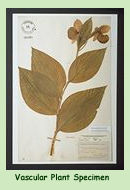
The UNIVERSITY
OF IOWA HERBARIUM was a repository for dried and fossil plant specimens
from all over the world, but the primary focus 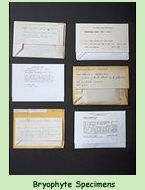 was
Iowa and North America. There were approximately 175,000 collections of vascular
plants (flowering plants, conifers, ferns and fern allies), 80,000 bryophytes
(mosses, liverworts and hornworts), and 5,000 fossils.
This Herbarium was larger than 92% of nearly 600 herbaria in the United States,
and it housed
the only major
collections of bryophytes and fossils in the state.
was
Iowa and North America. There were approximately 175,000 collections of vascular
plants (flowering plants, conifers, ferns and fern allies), 80,000 bryophytes
(mosses, liverworts and hornworts), and 5,000 fossils.
This Herbarium was larger than 92% of nearly 600 herbaria in the United States,
and it housed
the only major
collections of bryophytes and fossils in the state.
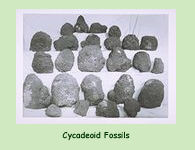
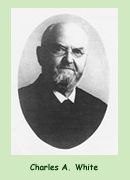
To trace the history
of the Herbarium is to trace the establishment and development of the Biological
Sciences and the Museum of Natural History 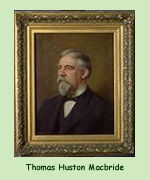 at
this University.
Charles White, a geologist,
founded the Herbarium in the Cabinet of Natural History (later the Museum of
Natural History) in the Old Capitol by 1869, but possibly as early as 1867.
It was the first Herbarium in the state, and it was established earlier than
89% of herbaria world-wide (data from P. Holmgren, 2002). In 1880, Thomas
Huston Macbride became the first Professor of Botany and
Curator of the
at
this University.
Charles White, a geologist,
founded the Herbarium in the Cabinet of Natural History (later the Museum of
Natural History) in the Old Capitol by 1869, but possibly as early as 1867.
It was the first Herbarium in the state, and it was established earlier than
89% of herbaria world-wide (data from P. Holmgren, 2002). In 1880, Thomas
Huston Macbride became the first Professor of Botany and
Curator of the
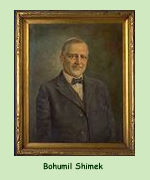 Herbarium.
Between 1880 and 1935, Macbride, and particularly
Bohumil Shimek, contributed
more than 25,000 specimens of vascular plants and bryophytes, most of which
were collected
in Iowa. In the 1940s and 50s, Henry
S. Conard incorporated his
Herbarium.
Between 1880 and 1935, Macbride, and particularly
Bohumil Shimek, contributed
more than 25,000 specimens of vascular plants and bryophytes, most of which
were collected
in Iowa. In the 1940s and 50s, Henry
S. Conard incorporated his 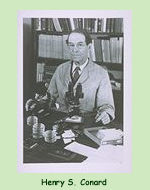 bryophyte
herbarium after he retired from Grinnell College. Robert
F. Thorne and his students were actively engaged in floristic surveys throughout
the state in the 1950s and early 60s, and these were well-documented with voucher
specimens. As a result of the addition of Conard's, Thorne's and many more
bryophyte
herbarium after he retired from Grinnell College. Robert
F. Thorne and his students were actively engaged in floristic surveys throughout
the state in the 1950s and early 60s, and these were well-documented with voucher
specimens. As a result of the addition of Conard's, Thorne's and many more
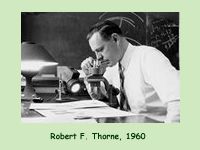 specimens
in the 1980s and 90s, the Iowa collections of vascular plants currently numbered
over 55,000 and there were over 13,000 bryophytes.
specimens
in the 1980s and 90s, the Iowa collections of vascular plants currently numbered
over 55,000 and there were over 13,000 bryophytes.
The University of
Iowa Herbarium housed the only major plant collection with significant world-wide
holdings in eastern Iowa. Collections were a vital resource for
research and teaching activities at the University of Iowa, as well as
for personnel from government agencies, conservation organizations, and the
general public.
Specimens provide the earliest 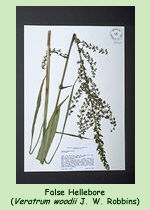 documentation
of the natural vegetation of Iowa, as well as documenting the ranges of indigenous
species, and the introduction and naturalization of alien species.
University of Iowa Herbarium specimens were a major resource for The Vascular
Plants of Iowa by Eilers and Roosa (1994), and specialists utilized them to
prepare their treatments for the multivolume Flora of North America. Specimens
provide scientific documentation for the Iowa Administrative Code lists of endangered
and threatened plant species. The Center for Global and Regional Environmental
Research (CGRER) recognized that
Herbarium specimens are an important resource for studies of the impact of climate
change. Specimens are essential aids for identification, and those in the Herbarium
were used routinely for this purpose by faculty and students, not only in Biological
Sciences, but also in Anthropology, Geoscience and the Office of the State Archaeologist.
documentation
of the natural vegetation of Iowa, as well as documenting the ranges of indigenous
species, and the introduction and naturalization of alien species.
University of Iowa Herbarium specimens were a major resource for The Vascular
Plants of Iowa by Eilers and Roosa (1994), and specialists utilized them to
prepare their treatments for the multivolume Flora of North America. Specimens
provide scientific documentation for the Iowa Administrative Code lists of endangered
and threatened plant species. The Center for Global and Regional Environmental
Research (CGRER) recognized that
Herbarium specimens are an important resource for studies of the impact of climate
change. Specimens are essential aids for identification, and those in the Herbarium
were used routinely for this purpose by faculty and students, not only in Biological
Sciences, but also in Anthropology, Geoscience and the Office of the State Archaeologist.
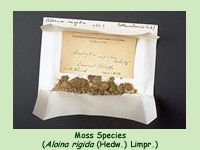 Specimen
labels are an invaluable source of locality data and ecological information,
and specimens also are referenced frequently by those who want to get a 'search
image' of a species, genus or family to facilitate field studies. Over the last
20 years, application of these techniques with specimens in the University of
Iowa Herbarium led to the discovery, and documentation, of numerous new county
records of both vascular plants and bryophytes, and several new state records.
These and other voucher specimens, collections that physically document scientific
investigations, were reposited in the Herbarium.
Specimen
labels are an invaluable source of locality data and ecological information,
and specimens also are referenced frequently by those who want to get a 'search
image' of a species, genus or family to facilitate field studies. Over the last
20 years, application of these techniques with specimens in the University of
Iowa Herbarium led to the discovery, and documentation, of numerous new county
records of both vascular plants and bryophytes, and several new state records.
These and other voucher specimens, collections that physically document scientific
investigations, were reposited in the Herbarium.
At the time the University
of Iowa Herbarium was dismantled, activity levels were robust, reflecting active
use of the collection by faculty, students, staff and the public of eastern
Iowa. Between 1989 and 2002, 100
publications/reports/creative works and over 30 theses have been based on
use of the Herbarium, and class use averaged over 300
students/yr in 10-12 courses. The Herbarium was a particularly important
resource for 'green track' (Biosciences Track) students in the Environmental
Sciences Program. We had an active outreach program that included presentations
to conservation groups, schools and colleges, and the University of Iowa Herbarium
website averaged over 6,200
Requests for Pages and over 1,300 Distinct Hosts Served monthly.
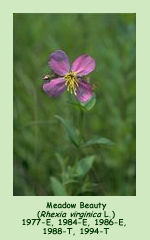
Between 2000 and 2002,
Herbarium projects included development of the University of Iowa Herbarium
website and the online, searchable database of state listings of Iowa endangered
and threatened species (the Fragile
Flora Database), as well as a database program in Access for entering collections'
data and generating specimen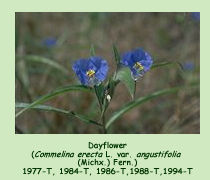 labels. At the time the decision to divest the Herbarium was made public, we
had just begun data entry and anticipated that it would take approximately a
year to record the Iowa vascular plant collections in the Herbarium. Ultimately,
we planned to make collections' data for the entire state available online in
an interactive format that would have included county distribution maps.
labels. At the time the decision to divest the Herbarium was made public, we
had just begun data entry and anticipated that it would take approximately a
year to record the Iowa vascular plant collections in the Herbarium. Ultimately,
we planned to make collections' data for the entire state available online in
an interactive format that would have included county distribution maps.
In spite of the historical significance of the Herbarium and the fact that it
currently was a vital resource for faculty, students, other professionals and
the public, University of Iowa administrators signed a Memorandum of Understanding
to transfer this irreplaceable collection to Iowa State University. Considerable
opposition to this decision was expressed via letters and e-mails to administrators,
as well as letters and editorial comments in
the public press.
Last Updated: 03/21/2006